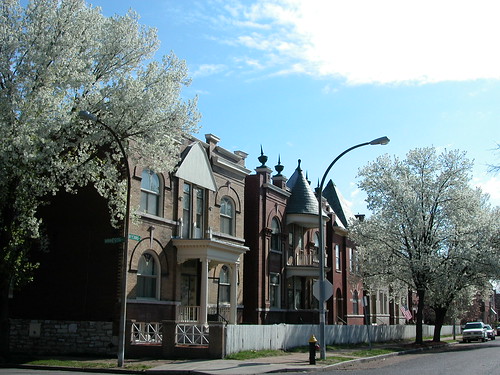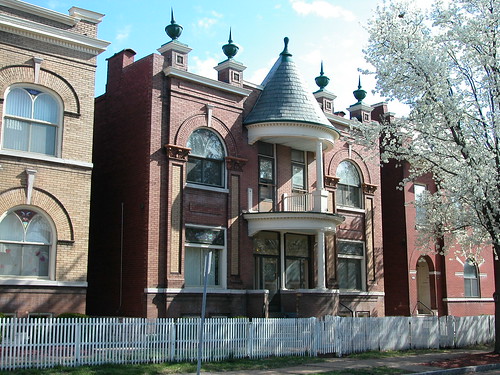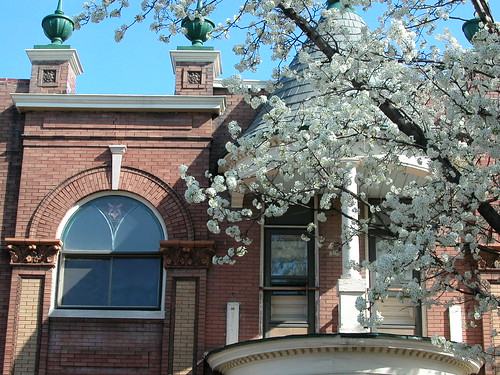by Michael R. Allen
 The flowering of Bradford pear trees on Wyoming Street is a good opportunity to showcase the cool, strange buildings at the northeast corner of Wyoming and Minnesota in Benton Park West. These two four-family buildings were built in 1896 by one D. Steimke for the cost of $3,700. A lot of construction was underway in Benton Park West at the time, although the July 1903 Sanborn fire insurance map page that includes this block shows more vacant than built-upon lots in the vicinity.
The flowering of Bradford pear trees on Wyoming Street is a good opportunity to showcase the cool, strange buildings at the northeast corner of Wyoming and Minnesota in Benton Park West. These two four-family buildings were built in 1896 by one D. Steimke for the cost of $3,700. A lot of construction was underway in Benton Park West at the time, although the July 1903 Sanborn fire insurance map page that includes this block shows more vacant than built-upon lots in the vicinity.
Now the area is one of the city’s most densely built-out and populated areas with a racial diversity unmatched in the city. The blocks upon blocks of brick buildings, the prevalent pedestrians of all walks of life, the playing children, the street trees — this adds up to city life at its best. Back in 1896, this big picture was still a handful of pieces, and the flats at 3023-25 and 3029-31 Wyoming were among the most unique pieces. They still are.
These regal buildings are twins in plan, mass, fenestration pattern and setback. The differences show a colorful architectural imagination at work. The corner building takes the plan and emphasizes horizontal lines with stone belt courses, flattened segmental arches and a dentillated cornice underneath a shaped parapet. A front porch forms a balcony. The windows on the front elevation probably have no twin anywhere else in the entire city.
 The inner building takes the plan and goes upward with verticality noted in each gesture. False pilasters with inset bricks of a different color rise up to robust Roman arches on the second floor windows. The shaped parapet forms bases for four urns topped by heavenward-directed finials. Here the center porch repeats the Roman arch shape in its curve and rises to form a tower that terminates in a conical turret. For the porch assembly alone, this house earns its rank as one of south city’s most unique.
The inner building takes the plan and goes upward with verticality noted in each gesture. False pilasters with inset bricks of a different color rise up to robust Roman arches on the second floor windows. The shaped parapet forms bases for four urns topped by heavenward-directed finials. Here the center porch repeats the Roman arch shape in its curve and rises to form a tower that terminates in a conical turret. For the porch assembly alone, this house earns its rank as one of south city’s most unique.

These two homes are fine illustrations of the late 19th century drive to experimentation in St. Louis residential architecture. Their eclectic classical revival style shows a wide range of influences and forms greatly enabled by the use of varied masonry units. Throughout the city, builders, draftsmen and architects of the period were crafting a turn-of-the-century sensibility truly unique to the city.
